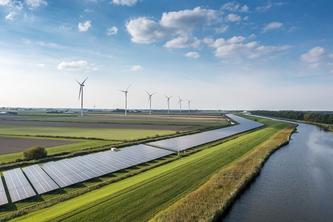
Amid supply chain issues and a worker shortage, the cost of consumer goods is rising—just in time for the holiday season.
According to the Bureau of Labor Statistics, in September prices for all items increased by 5.4% compared to last year. Sticker prices on the grocery store shelves are going up for the foreseeable future, with companies like Procter & Gamble announcing price hikes for popular products.
Carlson School of Management Professor Mark Bergen suggests lessons learned from extreme inflationary episodes can help consumers better navigate the big shopping season and the months ahead.
Mark Bergen, Ph.D.
“If you think of inflation as a tax, everything costs a little more, but not enough that you can’t buy it — though that erodes over time. If you’re not attentive, suddenly you’ll find that you’re short on your budgets.”
“As companies raise prices, they're going to try to do it in a way where you don't notice. Here are five things to look out for:
- Shrinkflation: Instead of changing the price, the product’s size changes. For example, the box of stuffing may cost the same this year, but there may be less inside.
- Shrinking discounts: If you’re looking to buy an outfit for the holidays, the discounts at the clothing store may be less than in the past. Expect to see smaller savings.
- Price increase on complimentary products: Pay attention to not only the main course, but to everything that completes the meal. The items you’re not paying attention to may be where the price increases are largest.
- Increased surcharges: Increased prices could be hidden in higher delivery costs or other additional fees.
- Bundle products: To hide the higher prices of the individual products, they will bundle items together. The 2-for-1 deal may not be the deal it seems to be.”
“Inflationary periods can be especially tough on vulnerable, low-income populations. When your budgets go down, firms offering 0% down and pay later options may look good. Check to see how much their prices and interest rates have increased to be sure companies aren’t hiding price hikes in ways you can’t see.”
“Holiday marketing activity will start even earlier this year due to supply chain constraints and inflationary pressures. Price increases will likely continue long after the holidays are over.”
Mark Bergen is the James D. Watkins Chair in Marketing at the Carlson School of Management. His research focuses on pricing and channels of distribution, where he has studied issues such as pricing as a strategic capability, price wars, pricing as truces, and how AI can help companies set prices more ethically.
- Categories:
- Business and Management
- Marketing





